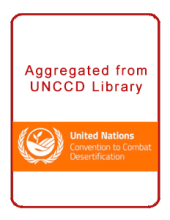Land Library
Welcome to the Land Portal Library. Explore our vast collection of open-access resources (over 74,000) including reports, journal articles, research papers, peer-reviewed publications, legal documents, videos and much more.
/ library resources
Showing items 1 through 9 of 166.The importance of land manifests in various components of the everyday lives of people insocieties: cultural heritage, livelihood, the environment, economy, and community, among manyothers. Land is a factor of development.
Nature-based Solutions (NbS) work with nature to benefit both natural ecosystems and the people that depend on them.
Since the commitments and reporting requirements of the SDGs ov erlap significantly with those of the UNFCCC and UNCCD, policy designe rs have mutually reinforcing incentives to advance this SDG commitment.
This practitioner’s guide explains how to promote gender-responsive forest tenure reform in community-based forest regimes. It is aimed at those taking up this challenge in developing countries.
Meeting the Sustainable Development Goals requires drylands sustainability. Treating drylands as global environmental commons enables better tailored governance responses. Key nested governance elements for drylands involve setting goals, monitoring and delivering sanctions across scales.
The failure of rural economies to deliver decent work to their young people affects national economies, threatens political stability, nurtures extremism and causes socially and economically disruptive migration. Globally, youth are two to three times more likely than adults to be unemployed.
‘Over the past three decades hundreds of thousands of farmers in Burkina Faso and Niger, on the fringes of the Sahara Desert, have transformed large swathes of the region’s arid landscape into productive agricultural land, improving food security for about three million people.
Valuable lessons can be learned from smallholder farmers who have successfully protected and regenerated tree cover across agricultural landscapes in Senegal, with minimal reliance on tree nurseries, seedling distribution or tree planting.
In the above initiatives, self-motivated populations increased food security and reduced vulnerabilities to climatic shocks by restoring and sustainably managing local forest resources.


